In February 2020, Alan Caiger-Smith passed away. His international reputation as a giant of twentieth century British pottery and a lustreware expert is undeniable, and much has now been written about his work and life at Aldermaston Pottery, near Reading.
Not much is widely known about Alan's links with Reading and the comprehensive collection of his works at Reading Museum. This blog aims to correct this, as we remember Alan's remarkable legacy and enormous contribution to Reading's artistic life, both as a master craftsman and as a Trustee of Reading Foundation for Art (RFA). We will also be introducing the medium that Alan used so brilliantly: lustreware.
Is lustre magic?
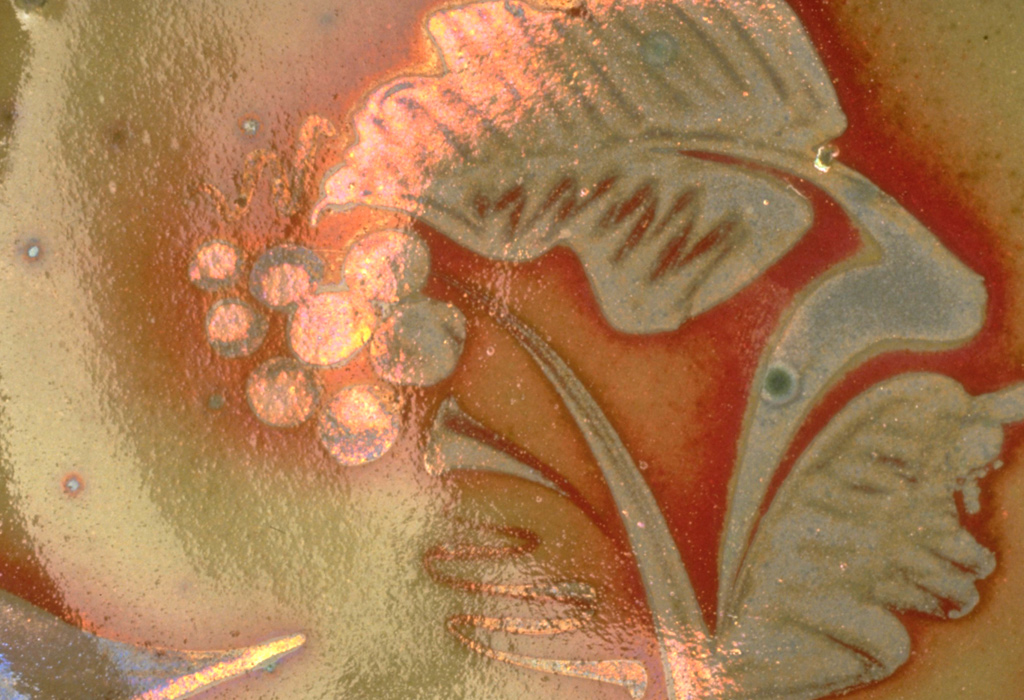
Lustre designed by Alan Caiger-Smith.
Reading Museum's Art Curator, Elaine Blake, remembers visiting Alan at his kiln at Aldermaston, in autumn, 2006:
Unloading the kiln had already taken several days when I arrived. Alan was savouring it, enjoying sharing the experience, with friends coming in for a few hours at a time. This was to be the last ever firing of the great wood-burning kiln at Aldermaston Pottery and I was enormously privileged to witness part of it. Most of the large dishes from the centre of the kiln had been removed and Alan was kneeling deep inside the kiln (still warm in the chilly afternoon) slowly drawing out bowls, jugs, and plates, carefully dealing with a stack at a time.
Alan handed me a small bowl that had been tucked into one of the corners of the kiln – ‘a good place for a small shape’ - and, initially, I was disappointed. It felt beautifully balanced, brilliantly potted, but the surface was a dull iron colour – perhaps this was one that hadn’t responded to the firing.
Alan, however, was looking excited. He grinned and suggested that I gently rub the surface with the cloth and fine pumice on the bench beside me. I did…and then the magic happened. Gradually the metallic looking layer rubbed off to reveal an abstract design of sweeping brush strokes dancing all over the bright white bowl.
The brush strokes were a vivid, lustrous, red. It was thrilling and Alan was the delighted alchemist responsible.
‘Red is the hardest lustre to achieve’, he said.
What is lustreware?
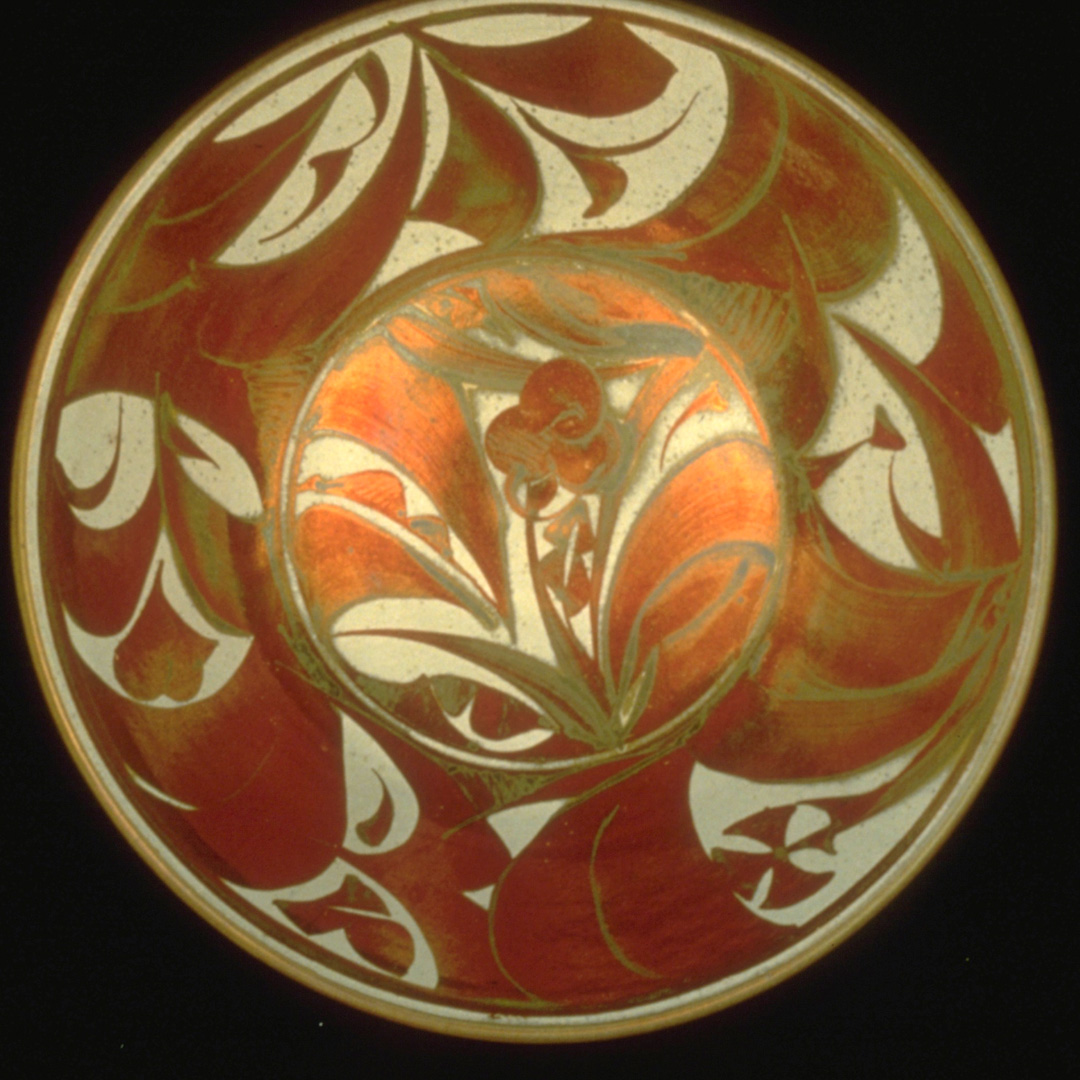
A red lustreware bowl by Alan Caiger-Smith.
Lustreware is a remarkable form of tin-glazed earthenware pottery. Each pot goes through three separate firings of the kiln and nothing can be certain because in each firing there are many variables.
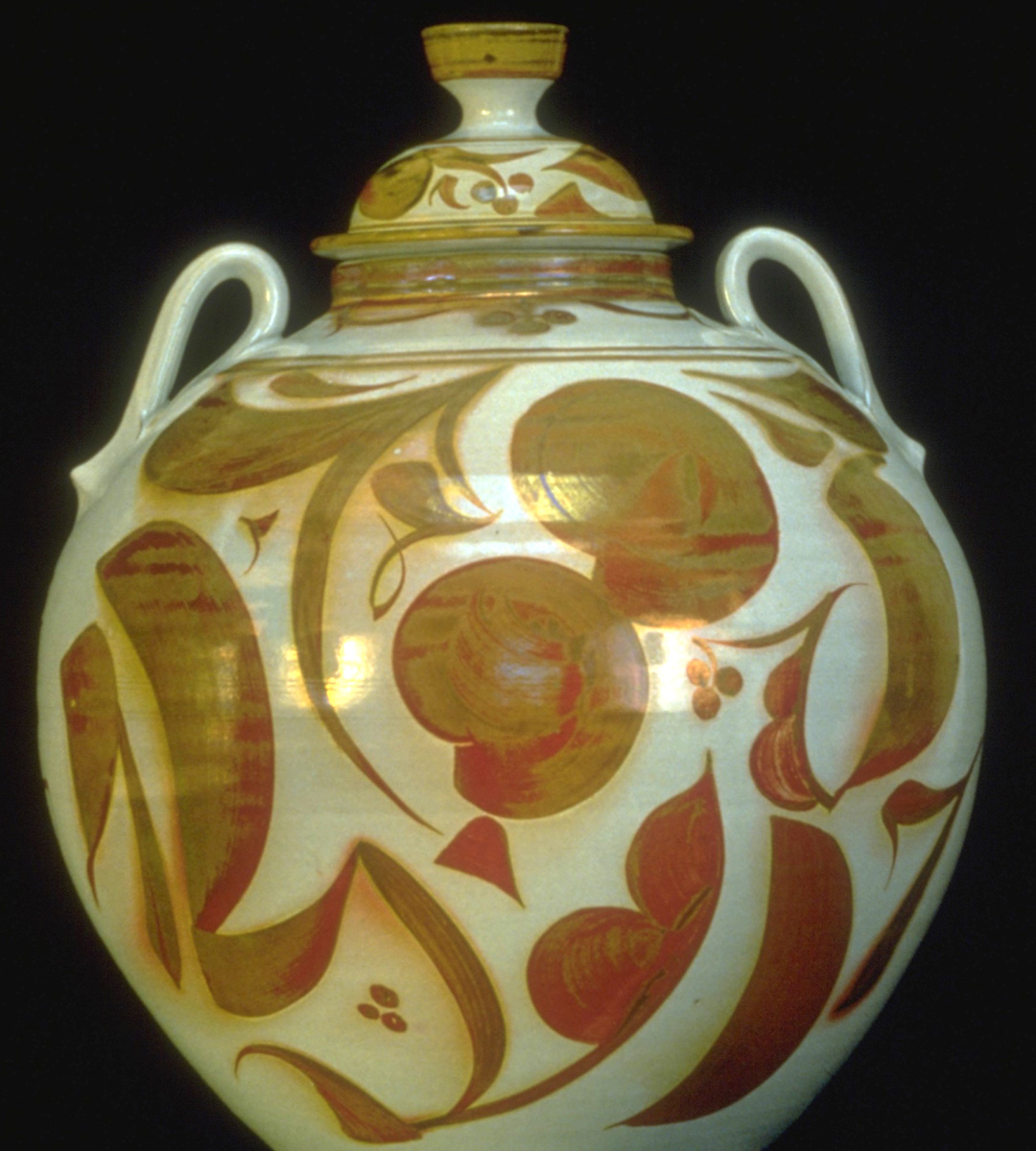
A ginger jar produced by Alan Caiger-Smith.
At Aldermaston pottery, the final look of each pot depended on where the pot had been placed in the kiln, what glaze and pigments were used, how thickly they were applied, whether the crucial smoky periods without oxygen in the kiln, so necessary to develop the lustre, had truly been without oxygen, how long each period was and how often they had been repeated. It even depended on what other pots were nearby in the kiln as this affected the flow of the hot air creating different cool and hot spots in each firing! This was all controlled by vents opened by hand and by hand-feeding the kiln fire with off-cuts of cricket bat willow from the nearby Kennet meadows - how dry or clean the wood was could make a big difference. Each firing was nursed by attendant potters with Alan, the master lustre maker, at the heart of it, mixing years of experience and experimentation with intuition.
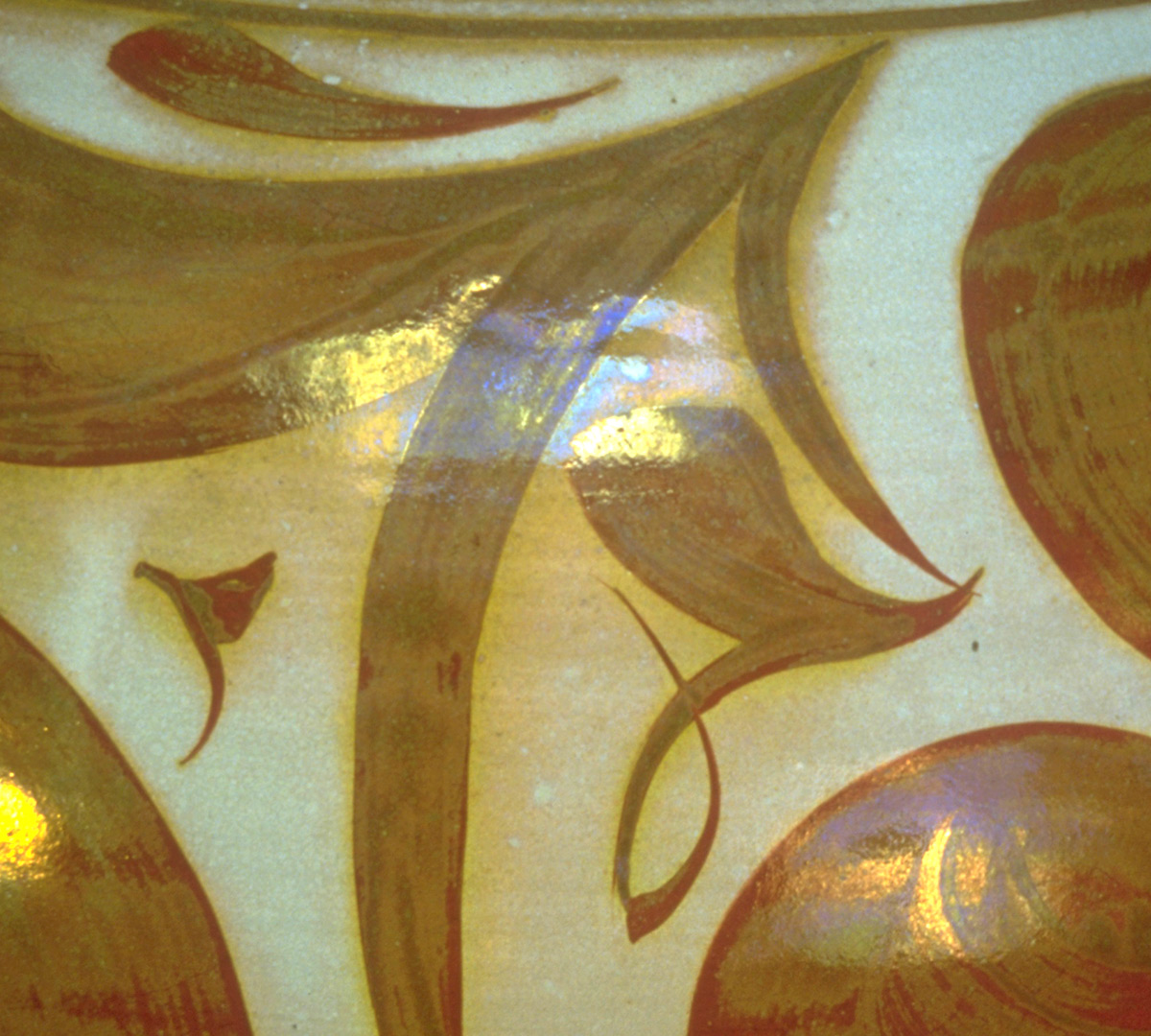
A close-up photograph revealing the beautiful details of the lustre.
Alan Caiger-Smith: International superstar
The many books and obituaries published throughout 2020 make clear Alan’s international reputation, celebrating his unique approach to running the pottery at Aldermaston and his life story.
A sign of Alan’s historic importance came a couple of years ago when the huge lustre pot that usually sits in the middle of the Museum’s Atrium Gallery was requested by the Yale Centre for British Art, Connecticut, U.S, for a major exhibition about British pottery. The pot had been made as part of an ambitious commission and subsequently acquired by Reading Foundation for Art. Typically when asked if the great pot should travel he thought for a moment, shrugged his shoulders and said it had only ever travelled between the pottery and the Museum but it was well potted and ought to stand the rigours of air travel. Everyone crossed their fingers, sent it to America and it had pride of place in the exhibition.
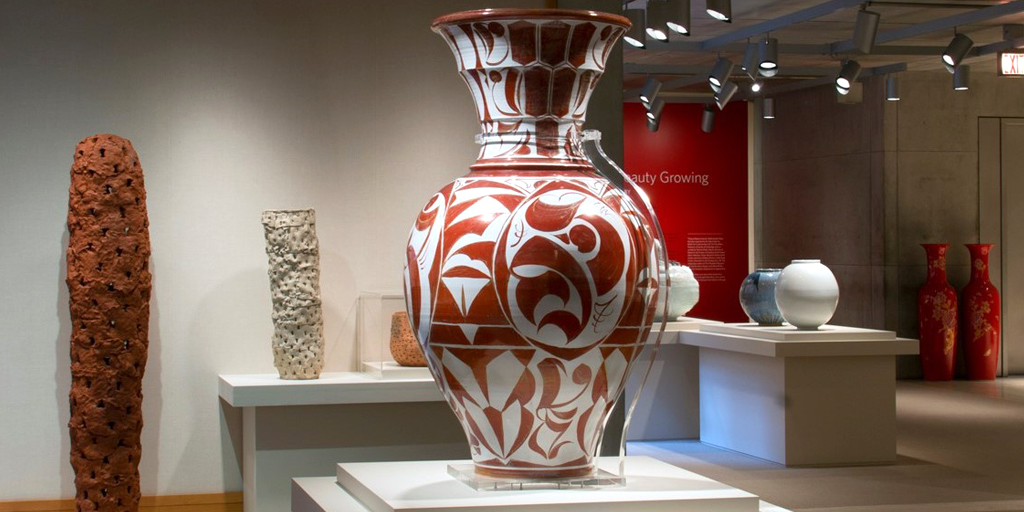
A large lustre pot by Alan on display at Yale Centre for British Art,
Earlier recognition had come came shortly after his 70th birthday when two of his patrons, Helen and David Watson, supported the Reading Foundation for Art to commission a portrait of Alan surrounded by the tools of his trade and in his potting sweatshirt.
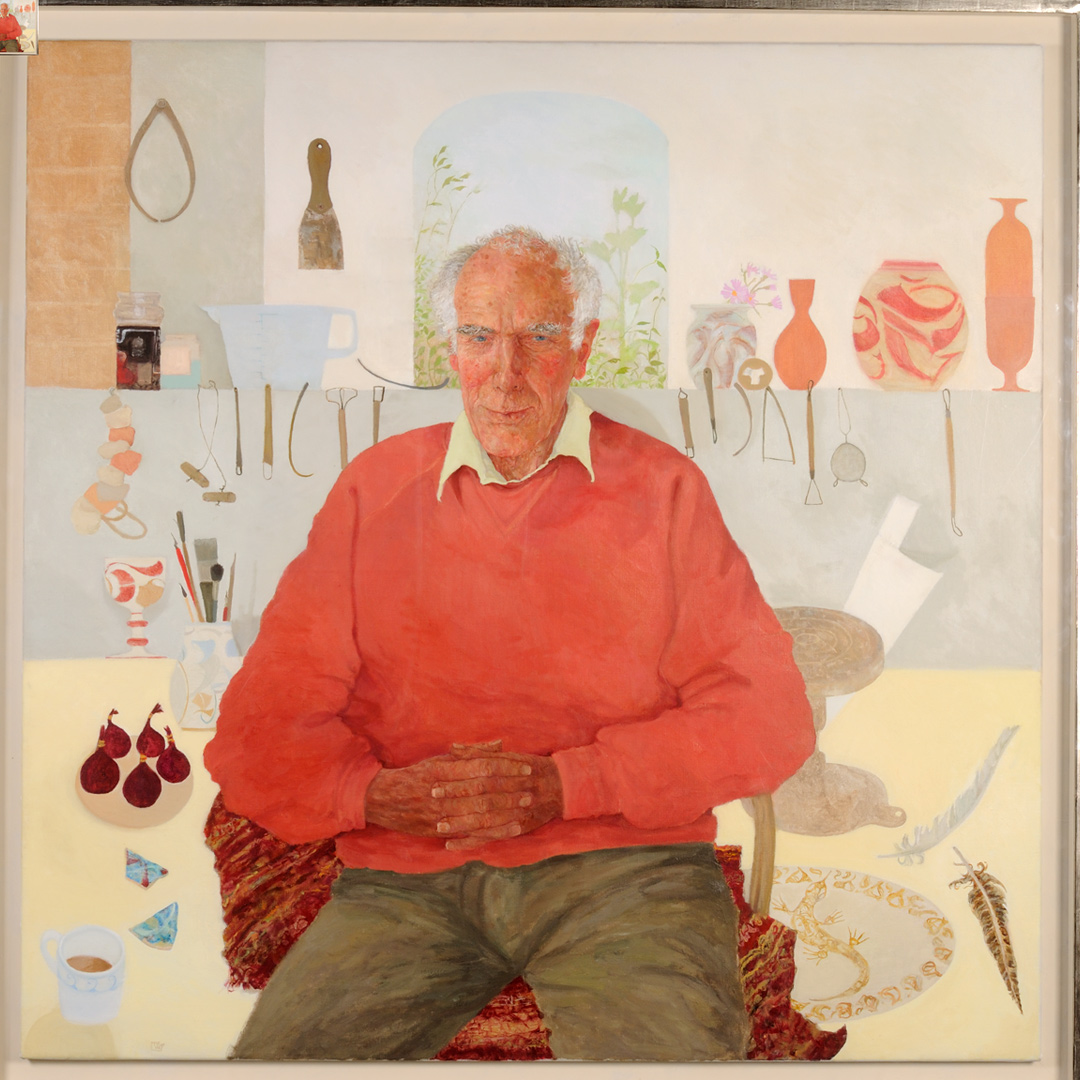
A portrait of Alan by Jennifer McRae, 2002 (Reading Foundation for Art), museum no. 2002.204.1
Alan was fond of Reading and with his death Reading lost an advocate and Reading Museum lost a friend.
In 1997, one of Alan’s greatest patrons, David Castillejo, wanted to place his collection of some of the best of Alan’s lustreware in a public gallery and Alan persuaded him to give it to Reading Museum. Why Reading? He was already represented in large collections like the Victoria & Albert Museum but as a boy Alan had been inspired by the Roman pottery and tin-glazed Delftware collection at Reading Museum and he thought they provided a historic context for his work. He also felt strongly that a major collection of his work should remain in the county where it had been made.
Fortunately, the Museum was refurbishing at the time and dedicated most of the new Atrium Gallery to the Castillejo collection. Alan chose to float a few thoughts across the walls between the ceramics. Deeply philosophical in his outlook he saw potting as a spiritual activity and his form of decoration, which flows around a motionless central point, as a metaphor for life. He chose a T.S.Eliot quote:
‘At the still point of the turning world…there the dance is’.

A small bowl by Alan Caiger-Smith.
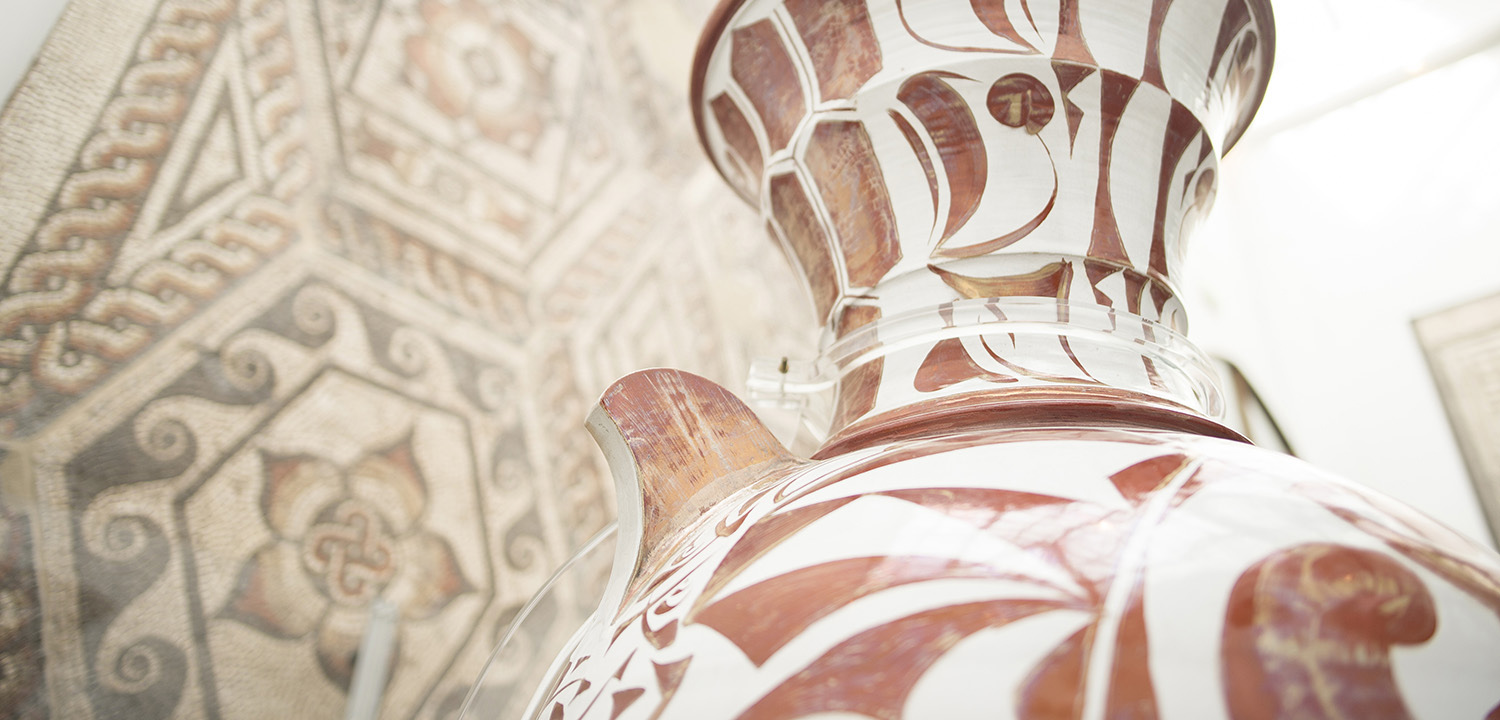
The Atrium at Reading Museum with Caiger-Smith's 1992 Tall Vase, behind is one of the two huge Roman mosaics in this gallery
In 1998, as the pottery was being cleared, Alan gave the Museum a further ten works selected to suggest the range of his work beyond lustreware. These included some of his favourite pots and some autobiographical works like a plate celebrating the colour and life on a Barbados beach which had delighted him when he arrived after three weeks of sailing across the Atlantic.

A beach scene in Barbados, produced by Alan Caiger-Smith.
Always keen to encourage and educate he arrived one day with a small shelf from the Aldermaston kiln which had been overfired. The extreme heat of the kiln had melted the pots that were stood on it and the glaze had run off the pots and fused them to the shelf. ‘I want you to have this to show that, even after years of working with our wood burning kiln whole firings can go wrong’. The shelf is often used to illustrate how precarious and unpredictable making pottery can be.
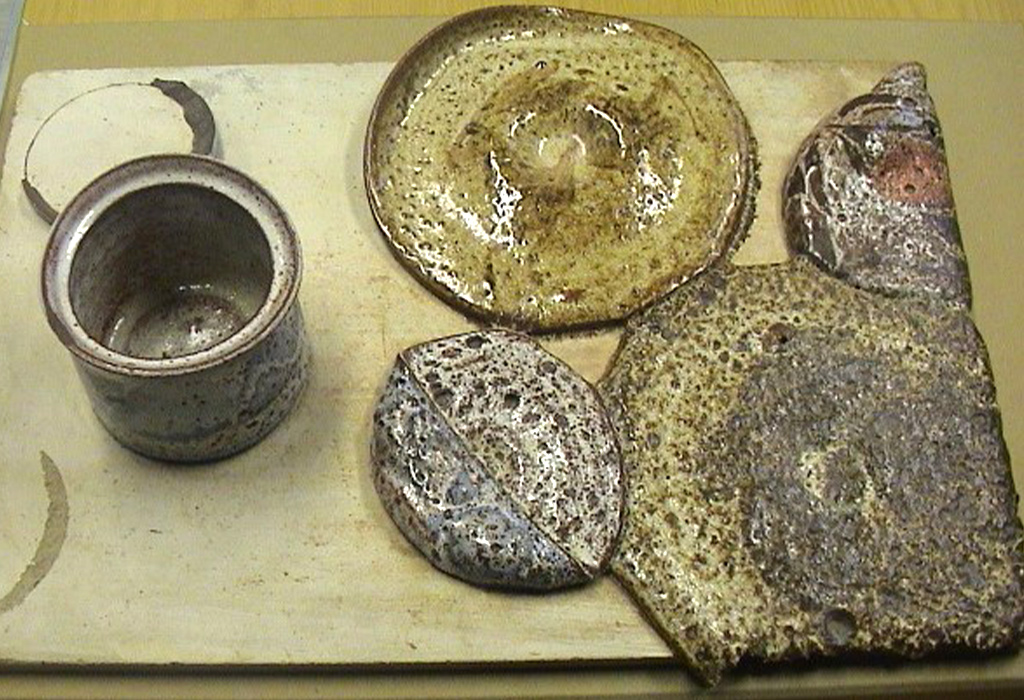
Overfired kiln shelf from the Aldermaston Pottery
In later years, despite being in high demand for lectures and advice, he still made time to work with the Museum to record the anecdotes behind the works and to respond to public enquiries about all sorts of ceramics. He was very generous.
In trust for the town
In 1991 Alan was invited to become a trustee of Reading Foundation for Art, the local charity set up in the early 1970s to acquire art for the town. He took over from the great British painter John Piper as the principal maker and for 25 years shared his belief in Reading and his appreciation of Art, great and small. He brought to the Foundation a clear vision, a sharp intellect and strong views, gently expressed. He had trained as a painter and retained a painter’s eye. He was excited by skill and craftsmanship as well as beauty and that was reflected in the acquisitions that he championed.
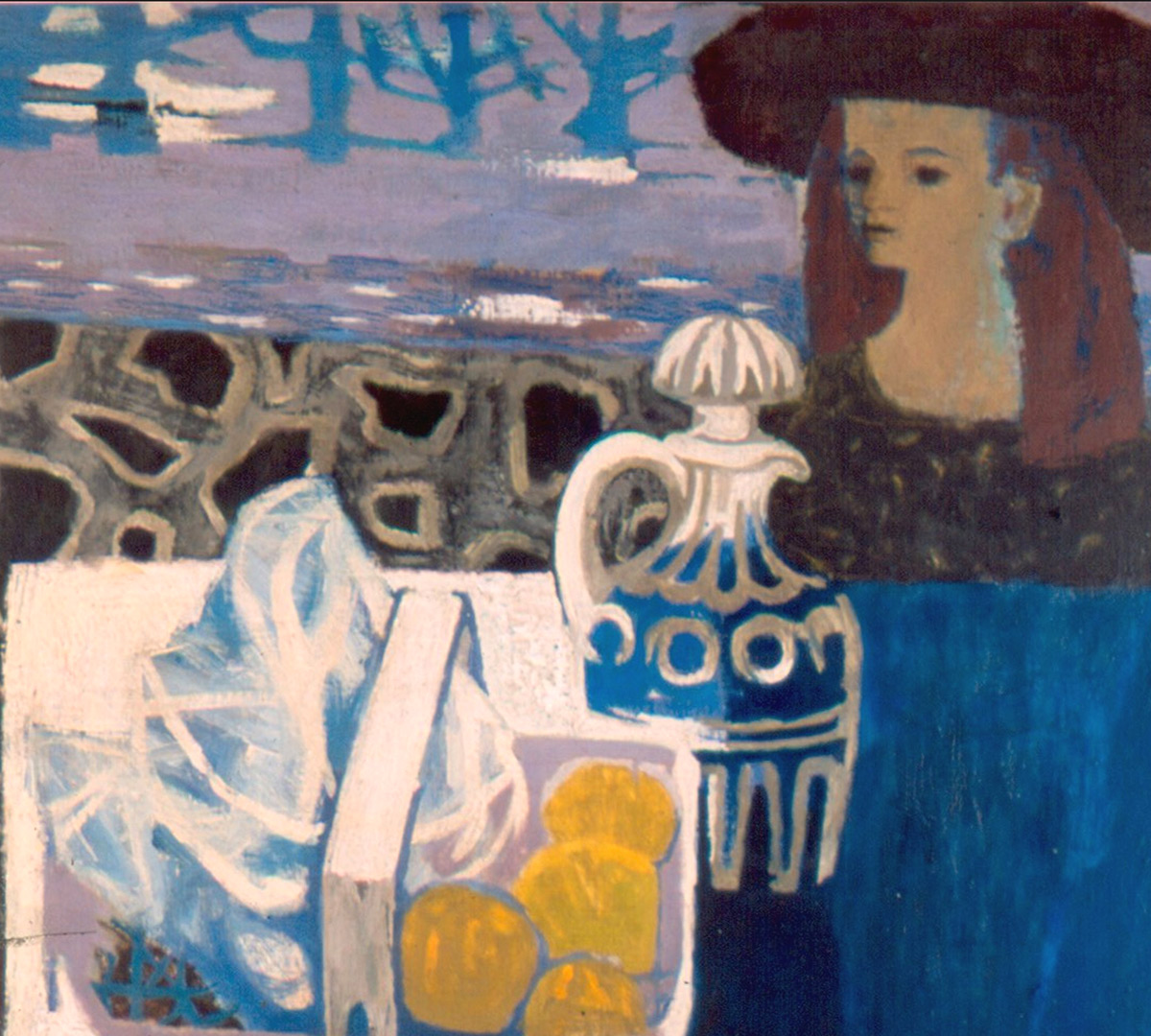
Girl in a Brown Hat, 1959, by Mary Fedden.
Alan selected the painting Girl in a Brown Hat when the well-known artist Mary Fedden offered to give a painting to the Foundation. He understood that it had an important place in her practice. He also found a personal connection, remembering a young woman who looked like the girl in the painting who he knew when he lived near Mary’s home in Chiswick. He never could resist a good tale. Soon after he brought to the Trustees attention That Same Sense by Carole Hodgson. This was made after Hodgson visited Mongolia and Alan saw it as an expression of the joyful oneness of man and horse amongst the horseman of the plains.
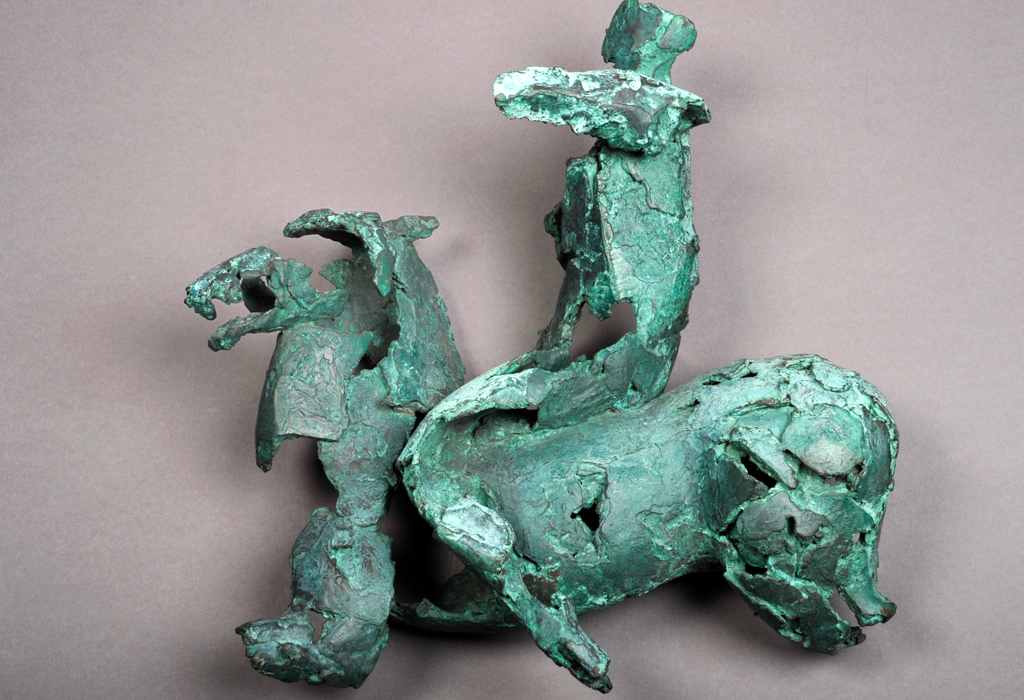
That Same Sense, 1983 by Carole Hodgson.
In 2002, the Foundation had been collecting for 30 years and Alan stepped up to select the works for a celebratory exhibition in the Museum’s Sir John Madejski Art Gallery. He also wrote the gallery text and his unique voice could be heard in the captioning. His opening speech, delivered quietly and thoughtfully, was full of a heartfelt appeal to people to use all their senses to witness the beauty around them. Typically he chose to call the exhibition ‘Collection in the making’ because he wanted the Foundation to be seen to be dynamic.
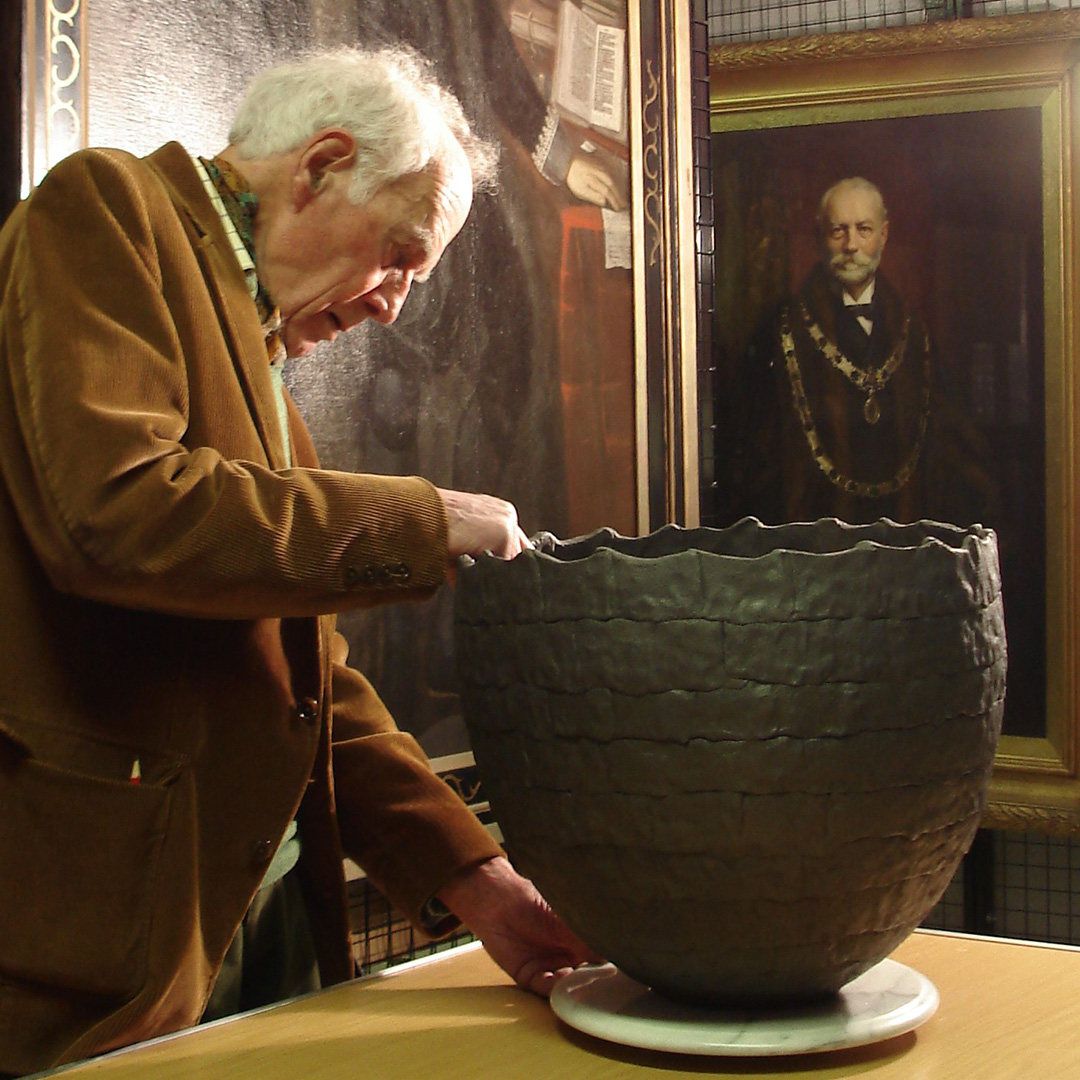
Alan with Black Crucible, 2004, by Geoffrey Eastop during filming.
Alan's desire to make the Foundation better known surfaced again in 2015 when he scripted and made a film with local filmmaker Konrad Welz. Alan’s Film, 2015 is about his views on Reading and the unusual nature of Reading Foundation for Art. He felt much more should be made of this extraordinary charity and that other towns could learn from it. He can be glimpsed at the end of the film walking by the Thames with his ‘circus dog’ Georgie.
Below, enjoy this moving film about the history of the art collection at Reading and Reading Foundation for Art on our YouTube channel:
Alan attended his last RFFA meeting in 2016 when he handed the baton of principal maker to local sculptor Johannes von Stumm. He is much missed.
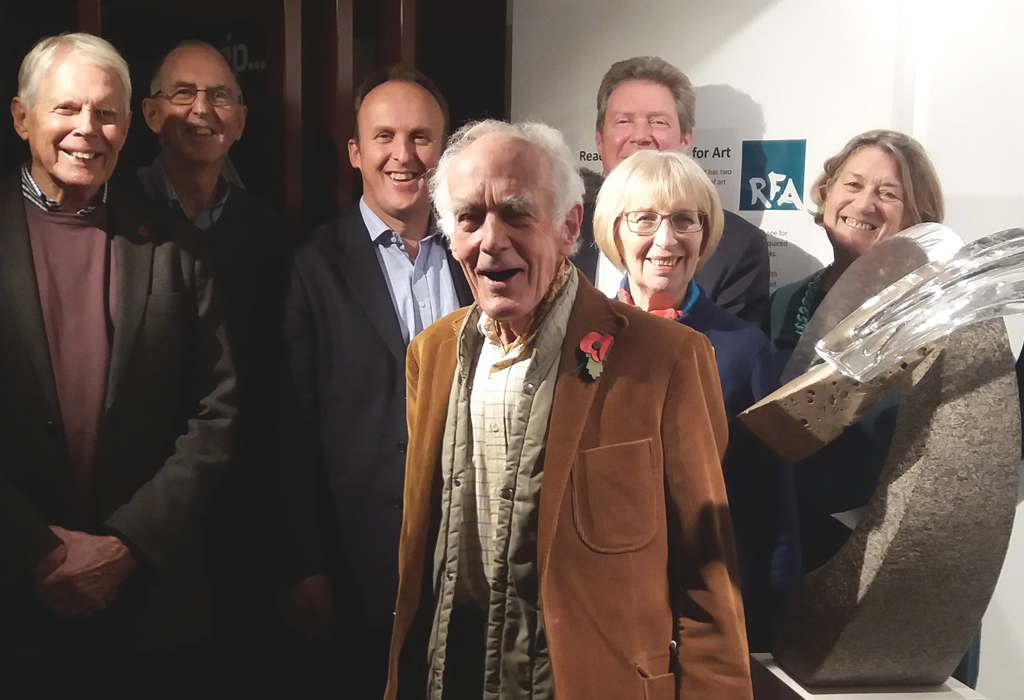
Alan's final RFA meeting.
See Alan's works at Reading Museum
You can view Reading Museum's comprehensive collection of tin-glazed ceramics by Alan Caiger-Smith in the naturally lit Atrium, where they are beautifully displayed in stunning juxtaposition with mosaic pavements from the Roman city of Calleva.
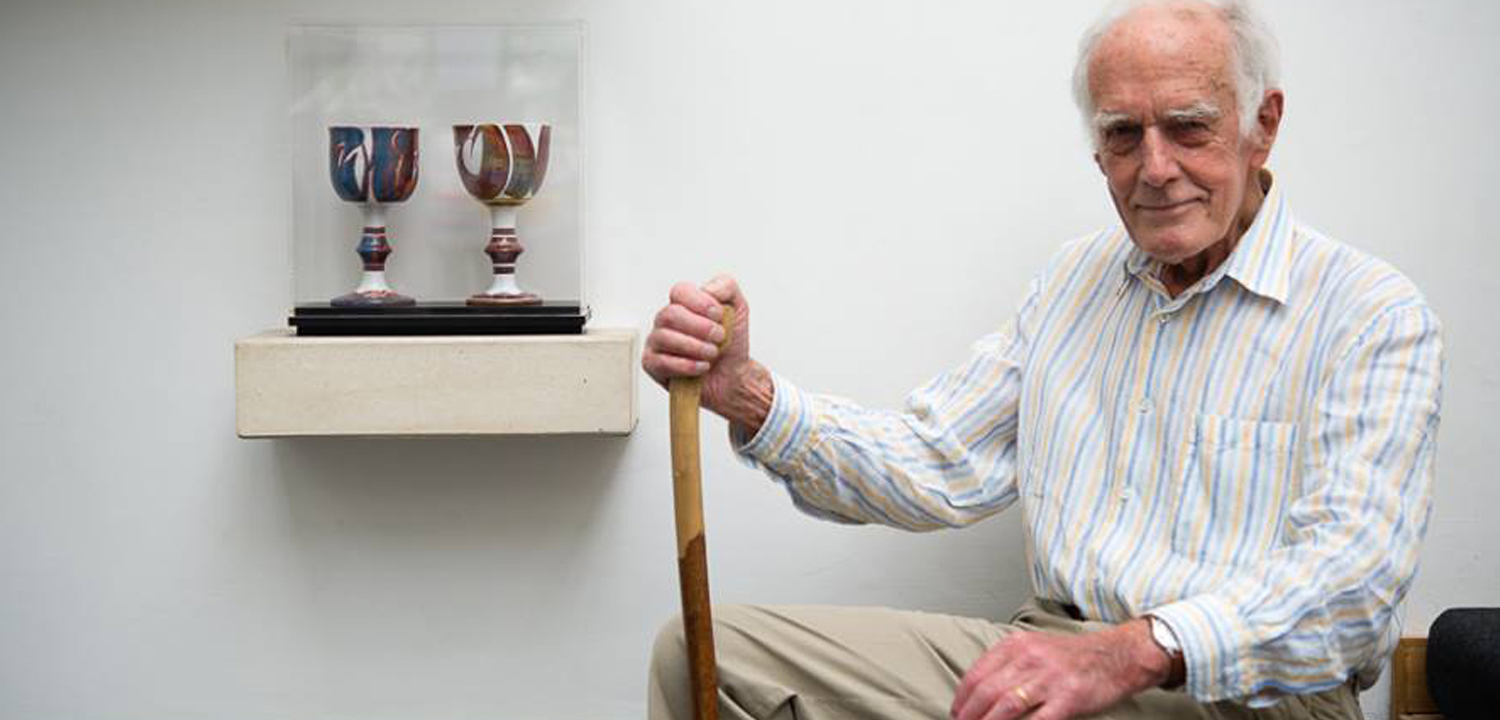
Alan Caiger-Smith in the Atrium at Reading Museum by Ben Boswell (copyright Ben Boswell)
Further reading
The Reading Foundation for Art collection website
Reading Museum Online Collections topic: Alan Caiger-Smith and Aldermaston Pottery
The Guardian: Alan Caiger-Smith obituary
Aldermaston History: Alan's Obituary
Alan Caiger-Smith and the Legacy of Aldermaston Pottery, Jane White, (Ashmolean Museum, University of Oxford, 2018)
Alan Caiger-Smith: Pottery, People and Time, Richard Dennis (1995)





